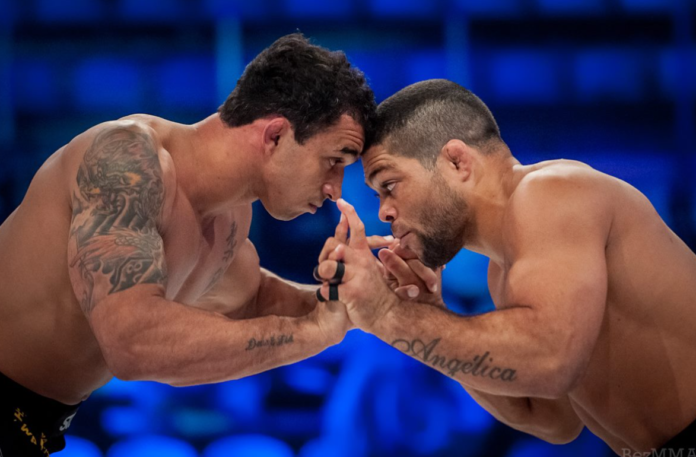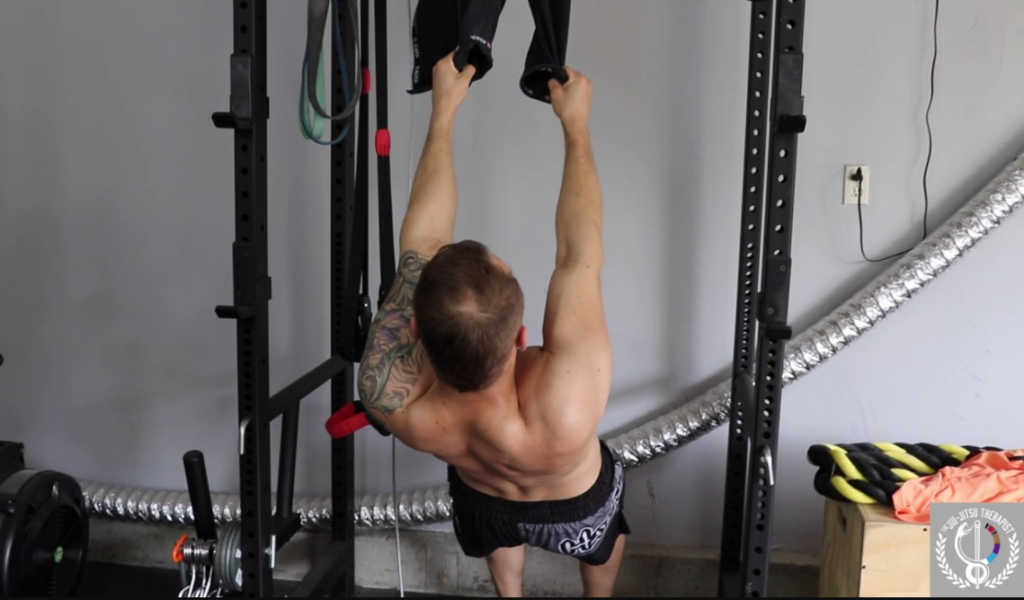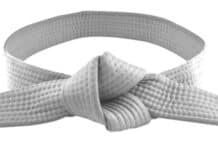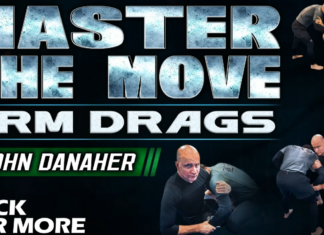
BJJ is an exciting and challenging sport and not one without its risks. One of the most common complaints among BJJ practitioners is sore forearms. Forearm pain can range from a dull ache to a sharp burning sensation, and it can significantly impact your ability to train effectively. Today we’ll discuss the case of a sore forearm (or two), exploring the causes of forearm pain in BJJ, how to prevent it, and how to relieve it if you do experience it.
Why Do You Get Sore Forearms From BJJ?
If you practice BJJ, you may experience sore forearms, which can be uncomfortable and even debilitating. The stress on the forearms is pretty significant during grappling, with all the grabbing, pulling, twisting, and rotating we do with our arms. Forearm pain is not something that is too dangerous, but it shouldn’t be taken lightly either.
What is Forearm Pain?
Forearm pain is a common condition that affects many people, especially those who perform repetitive activities that involve the wrists and arms (like grapplers). The pain can be felt anywhere from the wrist to the elbow and can range from mild discomfort to severe pain. Forearm pain can be caused by various factors, including overuse, injury, and pre-existing medical conditions.
What Causes Forearm Pain?
There are several factors that can cause forearm pain in BJJ practitioners. One of the most common causes is overuse of the forearm muscles. When you train BJJ regularly, your forearms are constantly engaged, which can lead to inflammation and soreness.
Another cause of forearm pain is improper technique. If you’re using less than optimal mechanics when performing BJJ techniques, you are most likely putting undue stress on your forearms. This can lead to strains, sprains, and other injuries which are very uncomfortable for a few days.
Other factors that can contribute to a sore forearm and localized pain in BJJ include:
- Poor conditioning of the forearm muscles.
- Lack of proper warm-up and cool-down exercises.
- Inadequate rest and recovery time between training sessions.
- Using a grip that is too strong or too weak.
- Excessive gripping or holding during training.
How to Prevent A Sore Forearm And Forearm Pain in BJJ?
Fortunately, there are several steps you can take to prevent forearm pain in BJJ.
- Conditioning. First and foremost, it’s important to properly condition your forearm muscles. This can be achieved by performing specific exercises that target the forearm muscles, such as wrist curls, reverse wrist curls, and grip strength exercises.
- Mobility. Additionally, incorporating proper warm-up and cool-down exercises into your training routine can help prevent forearm pain. Stretching and foam rolling will help increase blood flow and reduce inflammation in the forearms.
- Technique. Proper technique is also crucial in preventing forearm pain. Make sure you’re using mechanics as opposed to strength when performing BJJ techniques, in order to avoid overusing your forearms. Be sure to take breaks when needed and avoid excessive gripping or holding during training.
- Nutrition. Eating a healthy, balanced diet and staying hydrated can help to prevent muscle fatigue and soreness. It’s recommended to consume a diet rich in protein, complex carbohydrates, and healthy fats to support muscle growth and repair.
How Do You Soothe A Sore Forearm?
Sore forearms can be a real pain, especially if you engage in activities that require repetitive arm movements, such as grappling or MMA. Gi Jiu-Jitsu is particularly taxing on the forearms. Fortunately, there are effective massages and stretches that can help soothe a sore forearm and promote faster recovery.
Massages To Relieve Pressure
Massages can help alleviate pressure and tension in the forearm muscles, allowing for better blood flow and faster recovery. Here are some effective massages to try:
Barbell Massage: Using the thick part of a barbell, roll the forearm muscles from the elbow to the wrist. Apply moderate pressure and focus on the areas that feel the most tender or sore.
Dumbbell Forearm Massage: Using the end part of a dumbbell, roll the forearm muscles from the elbow to the wrist, applying pressure. This massage is especially effective for targeting the extensor muscles in the forearm.
Lacross Ball Self Myofascial Release: Place a lacrosse ball on a flat surface and roll the forearm muscles over it, applying pressure as needed. This massage is ideal for targeting specific trigger points.
Self-Applied Pressure Point Massage: Apply pressure with your fingers or thumb to the tender areas in your forearm muscles. Hold the pressure for a few seconds, release, and repeat as needed.
Self Myofascial Release With Joint Flossing Technique: Use a foam roller or a massage ball to release tension in the forearm muscles. Prior to rolling tie the forearm with a specialized flossing band to restrict blood flow.
Stretching To Relieve Pressure
Stretching is another effective way to relieve pressure and tension in the forearm muscles and get rid of a sore forearm from grappling. Here are some useful stretches to try:
- Wrist Extensor Stretches: Place your arm straight in front of you with your palm facing down. Use your other hand to gently pull your fingers back towards your wrist until you feel a stretch in your forearm muscles.
- Wrist Flexor Stretches: Place your arm straight in front of you with your palm facing up. Use your other hand to gently push your fingers down towards your wrist until you feel a stretch in your forearm muscles.
- Wrist Pronator Stretch: Place your arm straight in front of you with your palm facing down. Use your other hand to gently rotate your forearm towards your body until you feel a stretch in your forearm muscles.
- Wrist Supinator Stretch: Place your arm straight in front of you with your palm facing up. Use your other hand to gently rotate your forearm away from your body until you feel a stretch in your forearm muscles.
How To Strengthen Your Forearms For Grappling
If you’re a grappler, having a strong grip and forearms can be a game-changer. It can help you dominate your opponent, maintain control, and prevent injuries. Here are five of the best Jiu-Jitsu grip and forearm exercises to help you improve your grappling game.
-
Farmer’s Walks
Farmer’s walks are a great exercise for building grip strength and overall forearm endurance. To perform this exercise, grab a pair of heavy dumbbells or kettlebells and walk a set distance, keeping your shoulders back and your core engaged.
-
Plate Pinches
Plate pinches are another fantastic grip and forearm exercise that can be done with any weighted plate. Simply grab the plate with your fingertips, hold it for a set amount of time, and then release. Increase the weight and duration over time to continue building strength.
-
Pull-Ups
Pull-ups are a classic exercise that can improve your grip and forearm strength. Not only do pull-ups work your back and biceps, but they also engage your forearms as you grip the bar.
-
Reverse Barbell Curls
Reverse barbell curls specifically target your forearm muscles, including your wrist extensors. To perform this exercise, grip a barbell with an overhand grip and curl it up towards your shoulders.
-
Gripping a Gi
One of the most effective ways to strengthen your grip and forearms for grappling is to practice gripping a Gi. Grab onto your partner’s Gi during training and hold on tight. Focus on using your fingertips and keeping your grip firm and steady.
Incorporating these exercises into your training routine can help you improve your grip and forearm strength, giving you a significant advantage in Jiu-Jitsu and other grappling sports. Remember to start with lighter weights and gradually increase the intensity over time to prevent injury and maximize results.
How Long Does A Sore Forearm Take To Heal?
Sore forearms can be a common complaint among athletes, especially grapplers, weightlifters, and individuals who perform repetitive arm movements. The amount of time it takes for a sore forearm to heal depends on the severity of the injury, the individual’s overall health, and their adherence to proper treatment and rehabilitation methods.
Mild cases of forearm soreness caused by overuse or minor strain can heal within a few days to a week with proper rest, ice, compression, and elevation.
More severe cases of forearm pain, such as those caused by a fracture or torn muscle, can take several weeks or even months to heal fully.
To speed up the healing process, it’s essential to avoid activities that aggravate the injury and focus on rest and proper rehabilitation. This may include stretching, massage, physical therapy, or other forms of treatment recommended by a healthcare professional.
It’s crucial to note that returning to regular activities too quickly can further damage the forearm muscles and prolong the healing process. It’s essential to listen to your body and consult with a healthcare professional to determine the appropriate timeline for returning to your regular activities.
Conclusion
Forearm pain is a common issue for BJJ practitioners, but it doesn’t have to be a hindrance to your training. By understanding the causes of forearm pain, how to prevent it, and how to soothe it if you do experience it, you can continue to train effectively and improve your grappling game. Strengthening your forearms with the five best Jiu-Jitsu grip and forearm exercises can also help prevent future injuries and give you a significant advantage on the mat.












































